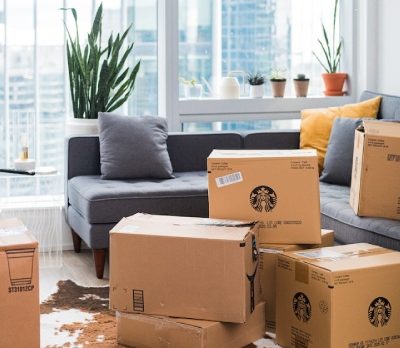Quick tips on how to pack
Quick tips on how to pack by Silvia from Homenizers
- Start Early: Begin packing as soon as you know you’re moving. Starting early reduces stress and gives you more time to organize.
- Declutter: Go through your belongings and decide what to keep, donate, or discard. Only pack what you truly need or want in your new home.
- Gather Supplies: Collect sturdy boxes in various sizes, packing tape and a tape gun, bubble wrap, plenty of packing paper – mostly for the kitchen and fragile items, markers, and labels. You might also need furniture covers and moving blankets.
Boxes guide (when ordering boxes from a packing store – Most people are fine just with Small, Medium, Large and a few extra large boxes)
Small Boxes (1.5 cubic feet):- Ideal for heavy items like books, canned goods, or small appliances.
- Also suitable for fragile items like dishes, glassware, and electronic accessories.
- Medium Boxes (3 cubic feet):
- Perfect for kitchen appliances, pots, pans, and small electronics.
- Can also be used for clothing, shoes, and non-fragile household items.
- Large Boxes (4.5 cubic feet):
- Great for lightweight bulky items like bedding, pillows, and lampshades.
- Also suitable for larger kitchen items such as mixing bowls or small appliances.
- Extra-Large Boxes (6+ cubic feet):
- Best for lightweight, bulky items like comforters, pillows, or large lampshades.
- Also useful for larger, lightweight items such as toys or stuffed animals.
- Wardrobe Boxes: – I recommend those only when super fancy clothes
- Designed for hanging clothes, coats, and suits. They usually come with a metal bar for hanging garments.
- Dish Barrel Boxes:
- Specifically designed for packing fragile kitchen items such as dishes, glasses, and china.
- File Boxes:
- Ideal for documents, files, and papers. They usually come with a lid and handles for easy transportation.
- Specialty Boxes:
- Consider specialty boxes for specific items like TVs, mirrors, or artwork to provide extra protection during the move.
Remember to pack heavy items in smaller boxes to avoid overloading and make lifting easier. Label each box clearly with its contents and destination room for efficient unpacking.
- Room-by-Room Approach:
- Kitchen: Pack fragile items first, like glassware and dishes, using plenty of packing paper. Use smaller boxes for heavy items like pots and pans.
Here is a simple YouTube video on how:
https://www.youtube.com/watch?v=uOUbxbAGDyA&ab_channel=NationalVanLinesInc
Pantry: pack heavier items at the bottom, this rule applies to everything, wrap and seal oils, open bottles, vinegars and so
- Bedroom: Pack clothes, linens, and personal items. Vacuum-sealed bags are great for clothing and bedding.
- Living Room: Wrap electronics in bubble wrap and pack them securely. Disassemble furniture if possible. If you don’t have bubble wrap, packing paper will do perfectly fine.
- Bathroom: Pack toiletries, medicines, and towels. Seal liquid items tightly – the lids with tape to prevent leaks.
- Label Everything: Clearly label each box with its contents and the room it belongs to. This makes unpacking easier and helps movers or friends know where to place boxes in your new home.
- Pack Essentials Separately: Pack a box of essentials for the first few days in your new home. Include items like toiletries, a change of clothes, important documents, and snacks.
- Use Space Wisely: Fill empty spaces in boxes with clothing, towels, or packing paper to prevent items from shifting during transit. Utilize suitcases and bags for additional storage.
- Secure Fragile Items: Clearly mark boxes containing fragile items and pack them with extra care. Use bubble wrap, packing peanuts, or blankets to protect delicate items.
- Heavy Items on Bottom: Place heavier items at the bottom of boxes and lighter items on top to prevent crushing.
- Take Inventory: Keep a detailed inventory of your packed items, especially if you’re hiring movers. This helps ensure nothing gets lost during the move.
- Prepare Furniture: Disassemble large furniture if possible. Keep screws and hardware in labelled bags and tape them to the furniture they belong to.
- Pack a “Day-of” Box: Pack a box with items you’ll need immediately upon arrival, such as toiletries, bedding, and basic kitchen supplies.
- Load Properly: When loading the moving truck, place heavy boxes on the bottom and lighter boxes on top. Secure items with straps or ropes to prevent shifting during transit.
- Stay Organized: Keep important documents, keys, and valuables with you during the move rather than packing them in the moving truck.
- Clean Up: Once everything is loaded, clean your old home thoroughly. Check all rooms, closets, and cabinets to ensure nothing is left behind.

